The F/A-18E/F Super Hornet: A Test Pilot Dispels The Myths
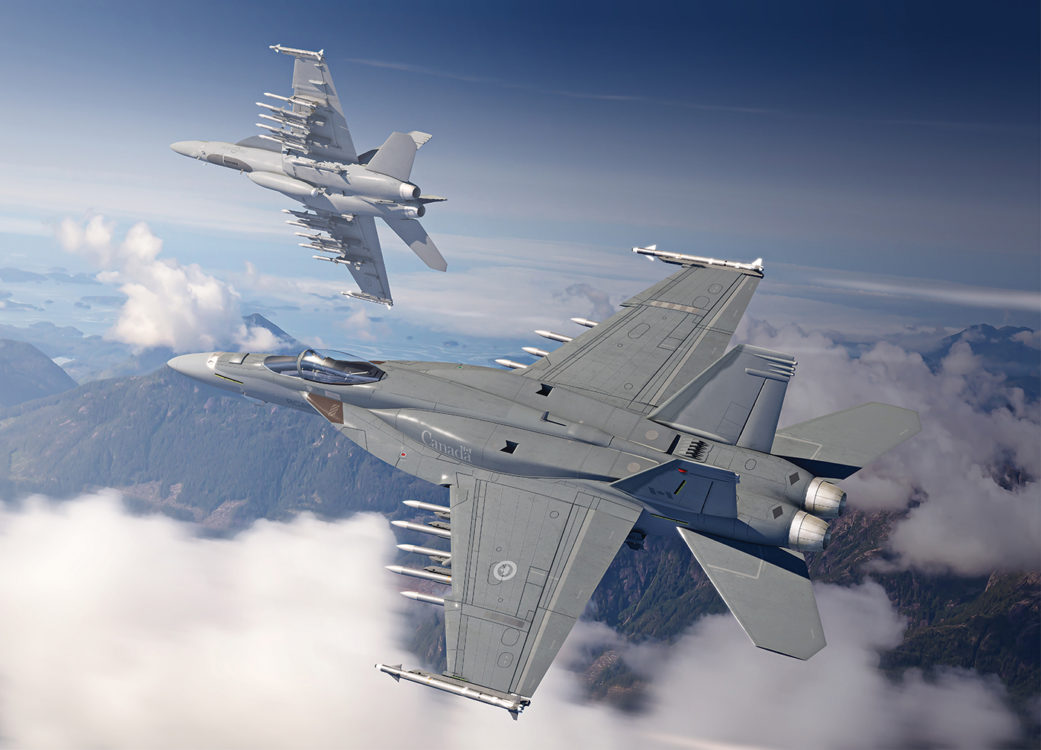
(Boeing)
There has been a great deal of interest recently in the press regarding the F/A-18E/F Super Hornet program, its progress through the flight test phase, and the requirements for the airplane in preparation for operational test. Unfortunately, there is a great deal of misinformation and innuendo from various sources that proclaim to be experts on tactical aircraft — and particularly on this airplane. In such an environment, it is important that we review the facts and dispel the myths regarding not only the requirements for the airplane but also its current performance in flight test.
Background/Requirement
In early 1991 with the cancellation of the A-12, an idea was born out of the Navy’s Hornet 2000 study to develop an affordable, follow-on strike fighter that would capitalize on all of the strengths of the most successful, multi-mission tactical aircraft the Navy had ever developed – the F/A-18C. The F/A-18E/F would improve on the F/A-18C’s capabilities, continuing a series of preplanned product improvements (P3I) into a new airframe that would provide the growth required for the next century. The Navy’s F/A-18C was approaching its limits for further growth, particularly in its carrier suitability weight limit.
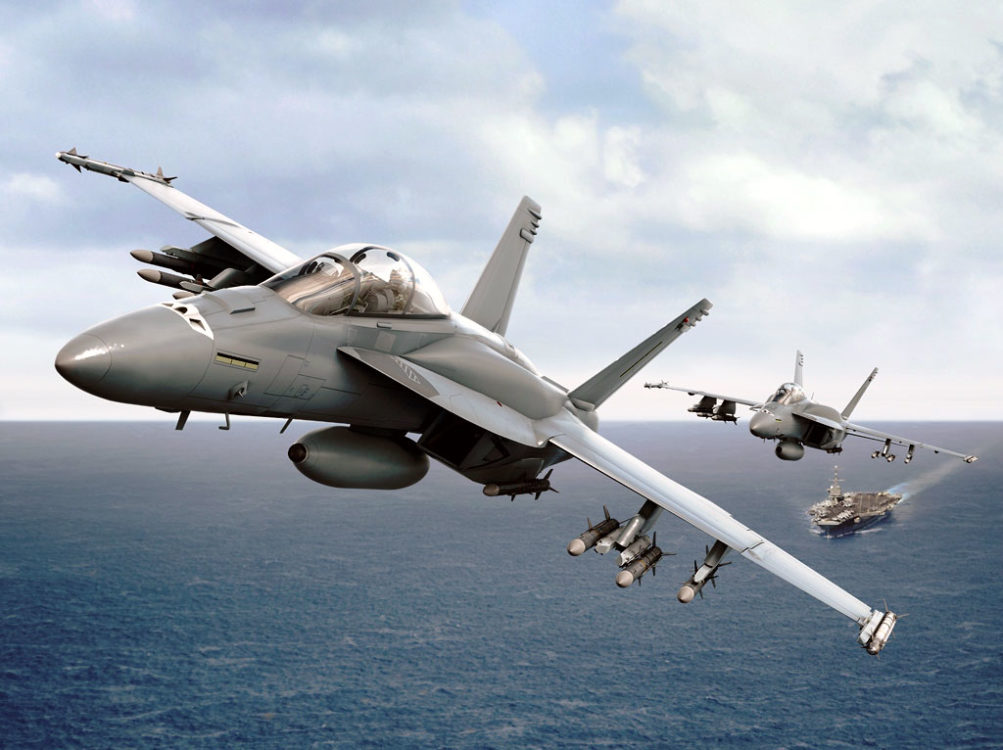
(Boeing)
As a result, the follow-on platform needed to meet several key requirements that would provide improvements over the F/A-18C. As stated in the F/A-18E/F Operational Requirements Document (ORD), “The CINC’s highest priority for the F/A-18 upgrade and the F/A-18 Operational Advisory Group’s number one hardware priority is increased internal fuel; other high priority F/A-18 upgrade requirements include improved carrier suitability and the postulated threat mandate improvements in three key areas: increased mission radius/payload, increased carrier recovery payload, and improved survivability/vulnerability.”
It is these enhancements, with growth for future upgrades, that became the pillars on which the F/A-18E/F was built. All of the requirements of this airplane were to be built inside a “box of affordability,” to ensure that the Navy could afford this platform in sufficient numbers to fill its carrier air wings of the 21st century.
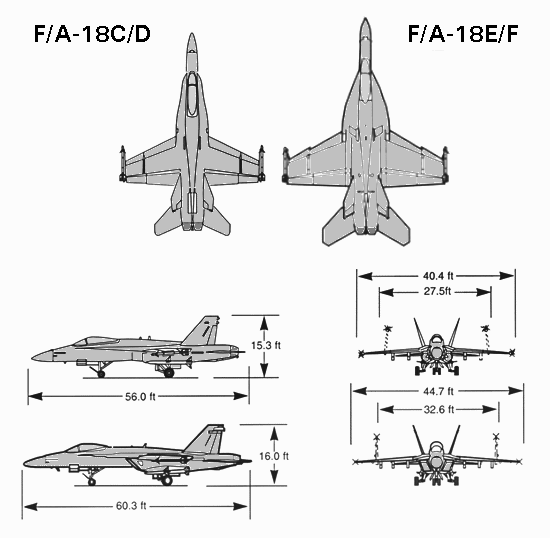
Myth vs. Fact
As the airplane has finished its design phase and entered flight test, conversations with fleet aviators have revealed a number of prevalent F/A-18E/F myths. While these myths and inaccuracies come from various sources, the answers and the facts flow directly from the previously stated requirements.
Myth #1 – “The E/F is not a stealthy airplane.” Fact – “The E/F is an extremely survivable airplane.” Stealth is one approach to survivability — a very expensive approach, whose stand-alone effectiveness is limited to a few mission scenarios. A flexible airplane requires a flexible approach to survivability, one that will deliver significant survivability improvements across the full span of envisioned missions.
By balancing the survivability of the E/F (with a combination of reduction in its vulnerable area; signature reduction; employment of defensive systems; and integration of stand-off munitions such as JDAM, JSOW, and SLAM-ER), the airplane capitalizes on all the survivability technologies of the past decade.
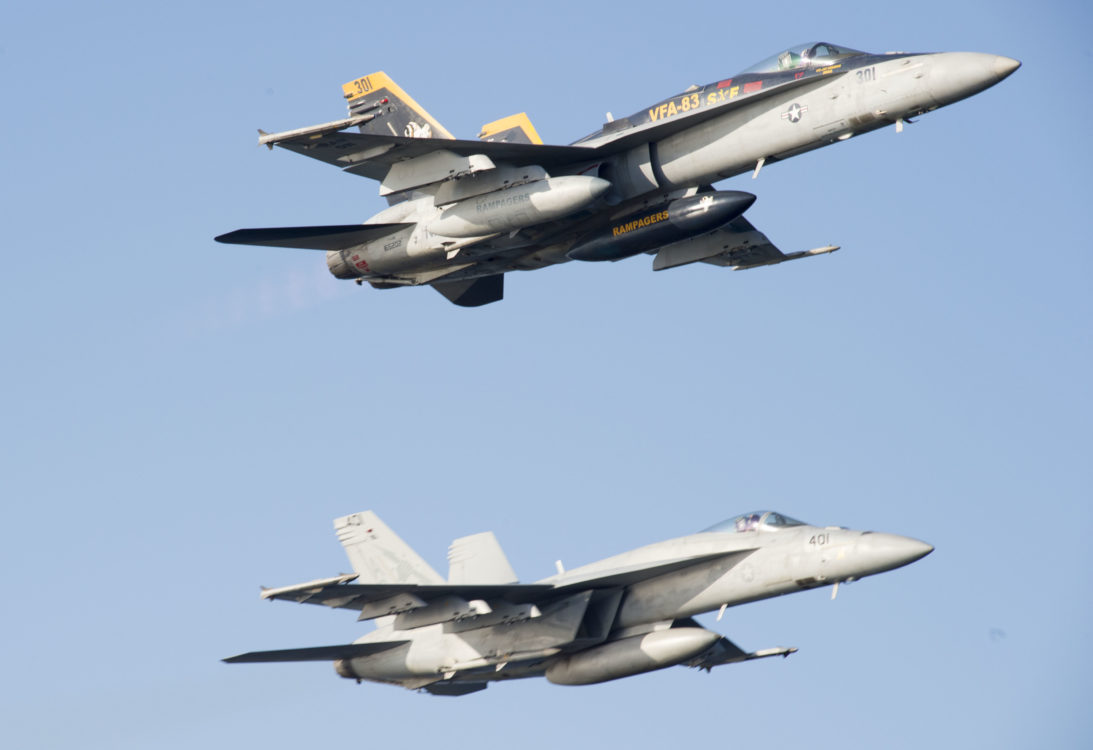
F/A-18 Hornet (top) and F/A-18 Super Hornet (bottom) (U.S. Navy photo by Mass Communication Specialist 2nd Class Chase Hawley/Released)
For example, a glance at the airplane’s physical geometry and exterior features reveals the influence of dedicated radar cross section (RCS) signature control. Where it made good cost-vs.-capability sense, the signature was tailored. For those aspects where additional signature control would have been cost prohibitive, the Navy directed survivability resources elsewhere to get the best return for each survivability dollar.
Next, the real measure of survivability is not the likelihood of a single asset’s coming back from any one mission. The real measure of survivability is the number of pilots and airplanes left on the flight deck after a campaign. Similarly, lethality is the number of targets destroyed per aircraft lost. More fuel and more weapon stations will enable the E/F to make fewer sorties into the target area and employ more tactically desirable routes. Fewer sorties and better routing will result in less threat exposure and enhanced survivability.
How do more stations contribute to improved survivability? If a strike planner today wanted to put two laser-guided bombs and two High Speed Anti-Radiation Missiles (HARMs) into the battle space, it would require a flight of two C/D aircraft, each most likely configured with two external fuel tanks. The strike planner who could employ the F/A-18E/F would be able to get that same load into the target area with one airplane (configured with a single 480-gallon fuel tank). As a bonus, the E/F would be able to carry two AMRAAM on the additional out board stations. It adds up: more weapons, fewer sorties, increased survivability, and greater lethality.
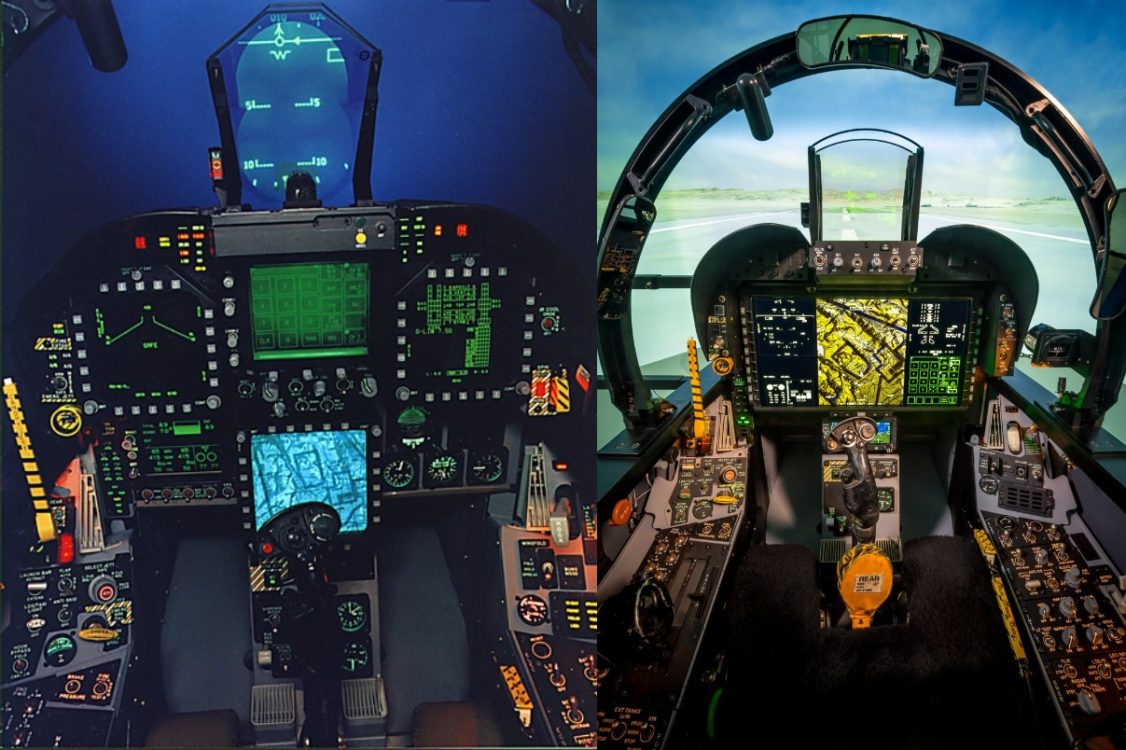
Block II Super Hornet cockpit (Left), Block III Super Hornet cockpit (Right)
Myth #2 – “Bigger means faster.” Fact – “Bigger means more ordnance, flying farther, staying airborne longer.” The F/A-18E/F moldline changes that provide for improved range, payload, and carrier suitability also, however, contribute to a steeper drag rise at transonic speeds, resulting in slightly slower level accelerations to supersonic speeds. A clean (no external stores) Lot XIX C/D will nose out a clean E/F in a drag race from 0.85 to 1.2 at 35,000 ft. But F/A-18E/F subsonic performance in both MIL and MAX power is significantly superior to that of a C/D, and manifests itself in shorter takeoff distances, better climb rates, and faster accelerations. In unloaded, tactically representative accelerations, the two aircraft are indistinguishable. “Apples-to-apples” comparison of the two aircraft must be done cautiously, however. One must remember that the E/F moves the C/D’s ever-present external wing tank fuel into the fuselage and wings. Deploying with a single centerline tank (its projected typical carrier configuration), the E/F’s acceleration performance will be a substantial improvement over a cruise-configured (two fuel tanks on wing stations) C/D everywhere in the flight envelope.
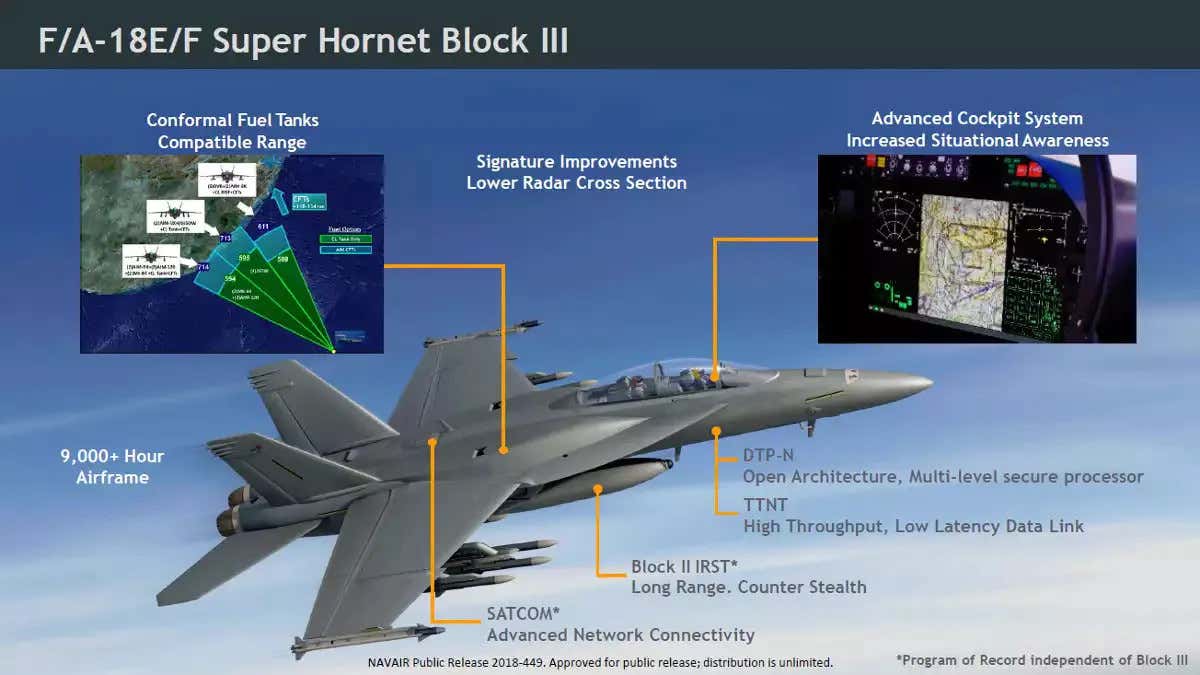
Myth #3 – “Then, bigger means less maneuverable.” Fact – “In the subsonic regime, the E/F performs as good as or better than a C/D in almost every respect.” The challenge posed to the contractor was not to compromise the Hornet’s superb capabilities as a dogfighter. “As good as, or better than…” was the standard to meet. The result is that the turning performance charts overlay one another. At high angles of attack, the E/F’s agility truly shines, with superior roll performance and much more carefree handling.
The heritage Hornet was already the stand-out, high angle-of-attack (alpha) machine in the U.S. inventory. The E/F is “hands-down” superior in that environment. As of the end of July, the test program had completed the high-alpha and spin programs on the E-models for all symmetric loads, and on the F-model for fighter and centerline loadings. Lateral asymmetries and F-model stores testing are in progress.
There will be no angle-of-attack restrictions for the symmetrically loaded E or F models. Spin characteristics are benign, with a simplified recovery compared with that of the C/D, and no sustained falling-leaf departure exists in any stores loading tested.
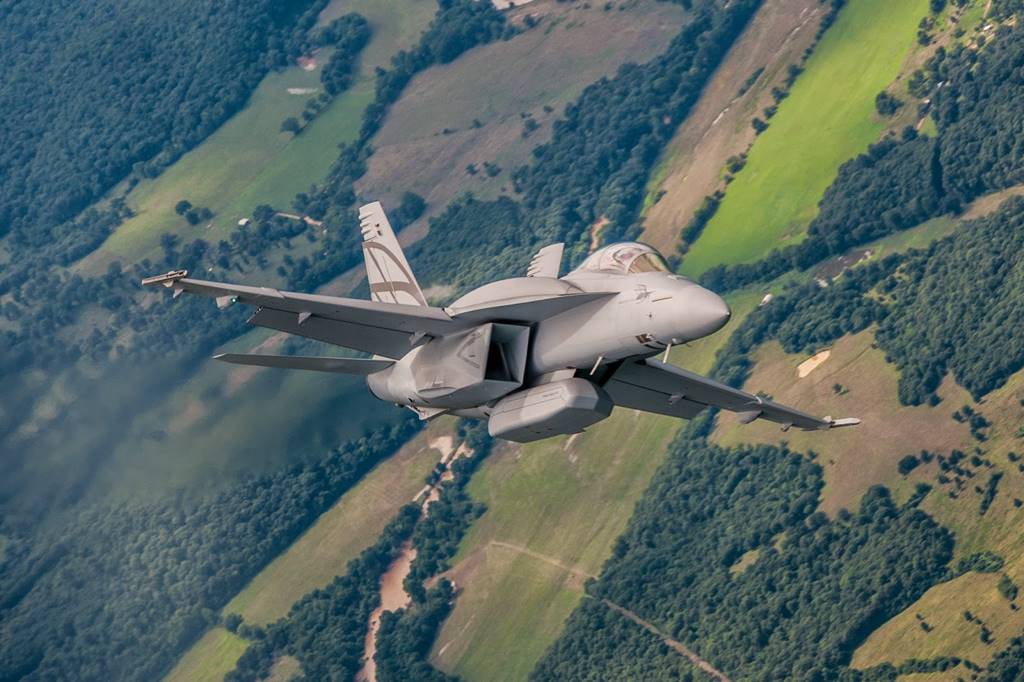
(Boeing)
My last flight in the E/F was in aircraft E4, loaded with three 480-gallon tanks and 4 Mk 83 bombs, and with the center of gravity ballasted to the aft limit of 31.8 percent. In that configuration, the airplane maneuvered without restriction from -30 to +50 degrees AOA, performed zero airspeed tailslides and spins to 120 degrees per second of yaw rate, and unsuccessfully attempted to generate a stable falling-leaf departure. We’ve engineered out all the known departure modes for rolls up to 360 degrees.
The air combat maneuvering (ACM) flights have revealed that the airplane may still be maneuvered at speeds as low as 80 KCAS. This airplane will be quite comfortable in any type of a “phone booth” close-in dogfight.
Agility, however, should really be considered in terms of the lethality of the complete weapons system. While thrust vectoring is maturing at a pace that might have allowed incorporation into the E/F, the weight and complexity penalties were prohibitive. Instead, adding the Helmet-Mounted Cueing System (HMCS) and a highly maneuverable off-boresight missile (AIM-9X) generates E/F total-system lethality that exceeds that available from a much more agile airplane with current missiles. HMCS and AIM-9X will enter the Fleet in 2001 and 2002, respectively.
Myth #4 – “Ninety percent avionics commonality with the C/D means that the E/F is recycling 1970s technology.” Fact – “Today’s F/A-18 C/D comes off the production line with a state-of-the-art cockpit and weapon system, thanks to a significant investment in growth since the F/A-18A’s introduction.” This actually represents a compelling case for E/F. The F/A-18A/B/C/D’s phenomenal growth in systems and missions are at the brink of physically exhausting the space of a 1970s airframe, while the weapons system inside is unquestionably 1990s. Modest improvements from Lot XX C/D to E/F are all that is initially required to make the Super Hornet state-of-the-art. What is needed is a 1990s airframe that can handle the growth for the avionics and weapons systems advances of the next 5 to 20 years. The F/A-18E/F is that airframe.
Where technological jumps in E/F avionics were possible, they were made. The touchscreen Up-Front Control Display (UPCD) is the most prominent feature of the Super Hornet cockpit. While other services were tentative about embracing touchscreen for tactical aircraft applications, we’ve seen this display move successfully to maturity. The prime piece of real estate dedicated to administrative tasks in the heritage Hornet (the UFC, or Up-Front Control), is now a full participant in the warfighting display suite.
Flight Test Highlights
How’s the airplane flying? Seven aircraft, in the third year of a flight test program at the Naval Air Weapons Centers at Patuxent River and China Lake, have flown more than 3,000 flight hours. Five Navy pilots share envelope expansion responsibilities with five Boeing/Northrop test pilots. Highlights of the testing to date have included Initial Sea Trials (January 1997, aboard USS Stennis), Operational Test Phase IIA (November 1997), and more than a million pounds of weapons expended off the aircraft.
The weapons separation effort is key to the entire program. It represents the true product to be delivered to OPTEVFOR/VX-9 for the Operational Evaluation (OPEVAL) in the summer of 1999 – an airplane ready to go to war with several dozen cleared weapons loads.
This represents a significant challenge to the test team. Hanging heavy, aerodynamically significant stores on a flexible structure means that each of the desired configurations is virtually a different airplane to be cleared for its flying qualities, performance, flutter, loads, and weapons separation. Due to the scope of the weapons program, it is not uncommon for the weapons-separation aircraft to be dropping bombs and firing missiles in parts of the envelope cleared only days prior by the airplanes devoted to airworthiness testing.
Results of testing to date have generally been very encouraging. Performance is coming in right on predictions. Technical challenges surface daily. They are an expected part of a “test, analyze, fix” process, the highly publicized “wing drop” having been only one of scores Boeing and the Navy have faced together. Each of the seven aircraft are being modified continually to accommodate what has been learned in the previous weeks and months. The effort is strongly focused around preparedness for the airplane’s final exam (OPEVAL).
Flying Qualities
But what is it like to fly? “It’s a Hornet, only better,” were my comments after my first flight. When one accounts for the 90 percent commonality with the C/D avionics suite, nearly identical cockpit switch positions, and preflight procedures copied directly from the C/D NATOPS manual, a Hornet pilot’s first impression is to feel right at home. It’s upon second glance that the changes become more significant. An E-model’s start-up internal fuel state is 14.5 (14,500 pounds of fuel), vice the C’s 10.7 (10,700 pounds). The Up-Front Control has been replaced by the versatile touchscreen Up-Front Control Display. Up and away flight handling is very similar to the C/D’s by design, though less susceptible to the anomalies the C/D exhibits at some conditions. In the landing pattern, even the C/D’s wonderful handling characteristics have been improved upon, with the increased weights providing better rejection of low-altitude gusts and much more stable ground handling. The airplane doesn’t even appear to notice load asymmetries to 30,000 ft-lbs. Approach angle-of-attack remains the same, but the larger wing provides for substantially lower approach speeds. In summary, getting comfortable flying the airplane takes no time at all, but the changes are so positive that a pilot may not want to go back even to the C/D.
Flash vs. Value
“What does the F/A-18E/F have for me?” Appreciating the F/A-18E/F also includes understanding the benefits to all of Naval aviation’s stakeholders. The E/F does not include every flashy type of technology ever mentioned in Aviation Week, but rather those that deliver significant warfighting value. The F/A-18E/F does not universally out-perform all of the airplanes it is replacing. Any aircraft with the F/A-18’s multi-mission capability will necessarily compromise some attributes to maximize the best overall capability. While every pilot longs for “more knots and more turn rate,” each needs to realize the value of the enhancements the F/A-18E/F brings to the carrier’s arsenal and to every interested warfighter in the joint arena.
The F/A-18E/F does deliver a superior strike fighter aircraft that will provide each stakeholder with substantially enhanced capabilities. We’re not just buying an airplane for the lieutenants to win the fighter or bombing derby—although the E/F will do that. We are buying a proven combat system to put into the hands of a theater CinC to execute our national military strategy. Logisticians, maintainers, and air staffs—as well as pilots—are stakeholders in the capability of that system.
With that said, the F/A-18E/F does not need to apologize for any of the design trades that were made, for every pilot and NFO coming to the airplane will find attributes that more than make up for what he or she is leaving behind. The transitioning F-14 pilot will clearly give up some high-speed dash capability, but in return will gain phenomenal systems reliability, survivability, agility and mission systems designed for strike warfare lethality. F/A-18 pilots will find the extra fuel they always wanted, while also gaining payload flexibility, carrier bringback, survivability, improved flying qualities, and welcome crew station improvements. The transitioning F-14/A-6 NFO who becomes the F/A-18F Weapon Systems Operator (WSO) will appreciate the state-of-the-art aft cockpit as well as the offensive and defensive weapon systems technology.
Those involved in support and maintenance are justifiably excited about this airplane. Squadron and Air Wing maintenance officers will get another step improvement in reliability and reduced mechanical complexity. (E/F is 25 percent bigger than C/D but has 42 percent fewer parts). The logisticians will see a resultant reduction in parts support to remote theaters. Air Bosses and Air Operations Officers visiting the Test Team have been excited about an airplane that will provide dramatic improvements in flexibility around the ship and the return of a tactical airborne tanker in the air wing with E/F’s Aerial Refueling Store (ARS) capability. Finally, the Strike Operations, Carrier Group staff, and Joint Air Staffs will be thrilled with the force-multiplying effect of a longer range, more lethal strike fighter on the flight schedule.
Low-Risk Combat Capability
The F/A-18E/F is the center of the Navy acquisition strategy, whose objective is to procure the best possible value in a power projection aircraft, thus “maximizing bang for the buck.” Maximizing carrier combat capability within the available fiscal resources meant pursuing a larger airplane while leveraging from the tremendous warfighting legacy of the F/A-18 C/D. Program opponents, both inside and outside the Navy, cite the F/A-18E/F’s technology as a marginal improvement over the Lot XX C/D coming off the ramp in St. Louis today. True, there are few tremendous technology leaps in this aircraft. What such a pundit does not appreciate is how much more combat capability the F/A-18E/Fs state-of-the-art improvements will deliver, when compared to the improvements that cannot be realized by modifying the C/D. The F/A-18E/F’s improvement in combat capability is substantial, making the technical low-risk approach of E/F a procurement bargain.
A story from Initial Sea Trials (IST) illustrates the success of this approach to technical risk. My partner, Mr. Fred Madenwald, Boeing’s Chief Pilot, returned from the airplane’s first flight in St. Louis in November 1995 and proudly proclaimed that it was “ready to go to sea.” With 14 months of flight testing to go before the aircraft’s first arrested landing aboard ship, the test team treated his remark with friendly derision as brash and premature. After IST, everyone was compelled to apologize. He was right! The airplane had been ready for sea: Not a single significant flight control change affecting IST had been required, and no significant problems were discovered while at sea. This was a remarkable achievement for the Hornet Industry Team, as multiple changes had been required to get the original F/A-18A through its IST. More importantly to the Navy, it was a validation of the basic strategy of getting the most warfighting value by keeping technical risk low and leveraging the proven capabilities of the heritage Hornet into a larger airplane that could deliver the goods.
Range… Payload… Growth… Bringback… Survivability… We’re getting what we asked for. _____________
Source: man.fas.org








